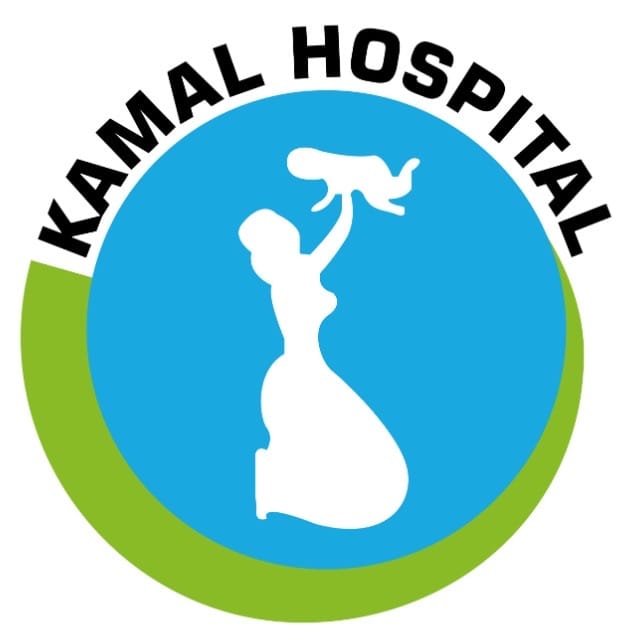What is episiotomy?
During normal vaginal deliveries, often a procedure called episiotomy is performed by obstetricians to help in the delivery process. Patients understand little about it and get anxious. In practice, a very frequently asked question is – what is episiotomy?
Episiotomy is a surgical incision that is given at your perineum (area between your vagina and anus) to ease the vaginal birth of your baby.
Table of Contents
Why is episiotomy required?
When you are in your second stage of labor and the mouth of the uterus has opened completely, the uterine contractions push the baby’s head into the vagina. When the baby’s head bulges at the outer skin of vulva, it may deliver smoothly or some difficulty may be encountered (see Labor and Normal Delivery for stages of labor).
If difficulty is encountered, you may suffer tears in your perineal area, while pushing down. So your doctor may give this episiotomy cut between your vaginal outer opening and anal opening to ease out the fetal head passage and also to protect the soft tissue of that area from injury (so that it does not snap and tear on its own in an unruly way). The episiotomy cut is a clean and calculated surgical cut with a much better recovery as compared to the zig-zag, bad tears that may happen naturally.
The assessment of whether to give episiotomy or not, is a spot decision taken by your obstetrician, at the time your baby is about to make its way out.
When is episiotomy given?
Episiotomy is given in your second stage of labor, once your baby’s head is bulging at the vaginal outlet and the labor pains are at their peak. Your obstetrician will decide the need for episiotomy and perform the procedure if indicated.
How is episiotomy given? Will it be a painful procedure?
- Episiotomy is given at the perineum, which is an area between the posterior edge of the vagina and on the other side is the anterior margin of the anus.
- Your doctor will give you a numbing injection at the site of the planned incision. Once it has taken effect, they will give an episiotomy incision. The incision can be slanting or a straight midline.
- After the delivery of the baby and the placenta, the episiotomy incision is stitched.
- As your doctor will give you a numbing injection before episiotomy, you will not feel any pain during the procedure.
Is episiotomy always necessary?
Episiotomy is not always necessary. Your health care practitioner will decide the need for the same depending on the following factors:
- The estimated size of your baby versus the size of your perineum.
- The stretchability and elasticity of the skin and the soft tissue of your perineum
- Your status of pregnancy: Whether this is your first pregnancy or the subsequent one and whether the previous birth was vaginal or through cesarean section?
- If there is any evidence of your baby being in distress and there is a need to speed up the process of the second stage of labor
- It there is a need for assisted delivery like in case of forceps or vacuum delivery
- If the baby is being born prematurely
- If your second stage of labor needs to be cut short. For example in medical conditions like heart condition or asthma.
If your gynecologist observes that your skin of the perineum is elastic, your baby is of average size with no additional problems, they might decide against giving an episiotomy. Episiotomy is only given if it is expected to make a difficult delivery easier.
How do I prepare myself for the procedure?
- Delivery is one of the most beautiful experiences in a woman’s life and episiotomy is a part of it. So first and foremost, stop stressing out. Stress hormones are not good for you or your baby. Enjoy your delivery process. Your doctor will take care of you.
- Keep a very positive outlook towards the procedure and its benefits.
- Massage your perineum with simple moisturizers or lubricants like coconut oil, vaseline, etc. during pregnancy to maintain its lubrication and improve its elasticity. This helps during delivery when the perineum needs to stretch to let out the baby.
- Eat a balanced and nutritious diet in tune with the needs of your pregnancy. Your doctor will advise you on this from time to time, during your visits.
- Avoid excessive weight gain during your pregnancy. Excessive weight gain makes the process of delivery difficult and the rates of complications are higher. Eat wisely and exercise regularly.
- Visit your gynecologist at regular intervals for an assessment of the growth of your baby. Sometimes due to certain conditions (like gestational diabetes), the baby may grow larger than expected for the stage of your pregnancy. Such large for gestational age babies are difficult to deliver and may need bigger episiotomies, while still causing pelvic injuries during delivery. This is preventable by regular follow-up with your gynaec.
- Finally, knowledge is everything. Now you know all about the procedure and what to expect. So you are all set to go!
How should I take care of my episiotomy after discharge?
- You should keep your private parts clean and change your sanitary napkins frequently. Maintaining good perineal hygiene is the key to good recovery.
- For episiotomy wound care, you should first wash your perineum with a commercially available vulval wash and then apply antibiotic ointment prescribed by your doctor on the episiotomy wound.
- Avoid soiling of the perineum with stool or fecal matter. While cleaning your perineum, always make sure that the direction of your cleaning should be from your vulva toward your anus. Never start from the anal area and come toward the vulva. This brings bad fecal bacteria and can cause infection of your episiotomy wound, in addition to causing vaginal infections.
- While discharge from the hospital, your doctor will prescribe you a course of antibiotics which you should continue diligently.
- Simple pain reliever medications should be taken to decrease the inflammation of the stitch line. Your doctor will prescribe you the needed medications in appropriate dosages. You can also try cold compresses for pain relief.
- You can also try Sitz bath for relief of pain. In addition to helping with pain relief, sitz bath is very soothing. For taking a sitz bath, you should sit in a shallow basin, containing warm water for approximately 5 to 10 minutes, 2 or 3 times a day.
- Usually, episiotomy stitches take one week to 15 days to heal. Nowadays the stitches applied do not need to be removed and dissolve on their own.
What are the complications of episiotomy?
Like any other wound, the episiotomy is also a stitch line. So there are chances of certain complications that are common to all wounds. For example:
- Bleeding
- Infection
- Hematoma formation
- Gaping of episiotomy wound
- Sometimes, the episiotomy can extend down toward the anal canal and this may lead to injury in that area.
If you have pain, redness or swelling in your episiotomy wound or there is bad odour or pus like discharge from your episiotomy wound, you should visit your doctor for examination. These complications can be easily sorted out by antibiotics, regular sterile dressings, or suturing. Your doctor will take care of them. So don’t worry.
Carry home message
Episiotomy is a simple procedure performed at the time of delivery, to make a difficult delivery easier. This benefits your baby as it prevents prolonged labor and the resultant fetal distress. It benefits you as the excessive stretching of the perineum in difficult labor can cause injury to your pelvic tissues. Some of these injuries and tears can be really bad and are easily preventable by a simple episiotomy incision. Stay healthy!

For more such interesting information on women's health, kindly visit our website Expert Gynae Care and our YouTube channel @drnidhigarg
To consult Dr. Nidhi Garg, please visit us at Kamal Hospital, Doaba Chowk, Jalandhar-144004 or Visit our website kamal Hospital jalandhar or Expert Gynae Care


